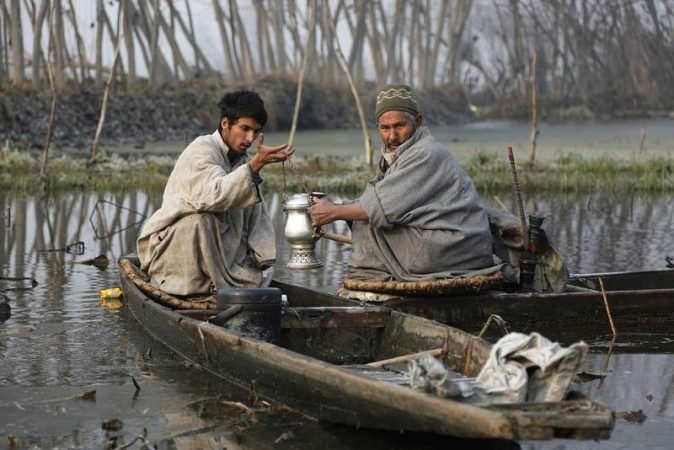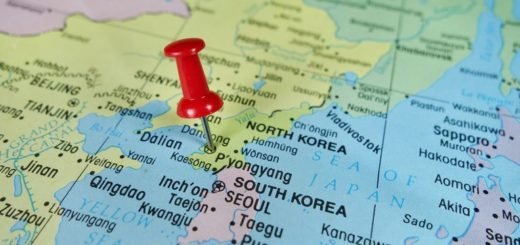The identity factor in Jammu and Kashmir

August 5, 2020 marks one year of abrogation of Article 370 of the Indian Constitution which accorded special status to the state of Jammu and Kashmir. Along with Article 370, the Indian government also repealed Article 35A which defined residency rules in Jammu and Kashmir. Further Jammu and Kashmir were bifurcated into Jammu and Kashmir and Ladakh which were given the status of Union Territories and not states. The Union Territories are under direct authority of the central government.
Abrogation of Articles 370 and 35A is a standout event in India’s history since independence. The Kashmir issue has always been considered from different angles such as its constitutional status, political solution and as a contested land between India and Pakistan. However, the factor of identity remains the base of the Kashmir issue. This factor has always been presented in a lopsided manner, which overtly or covertly, suggests separatist aspirations from certain political groups, Pakistan-backed terrorist organizations and Pakistan itself. It is, therefore, necessary to consider the identity factor in its entirety and examine it on the basis of facts that have been neglected until now.

Brief background of the special status of Jammu and Kashmir
The issue of Jammu and Kashmir’s special status has roots in the situation existing at the time of India’s independence. When India became independent on August 15, 1947, there were more than 500 princely states in India. Most of these states merged with India except for Junagadh, Hyderabad and Jammu and Kashmir. Junagadh and Hyderabad merged with India sometime later while Jammu and Kashmir was the last state to become a part of India.
The King of Jammu and Kashmir, Maharaja Hari Singh, agreed to accession only after Pakistan attacked the state in October 1947 with an intention to annexe Kashmir and to make it a part of Pakistan. There was a war between India and Pakistan. India was successful in driving out Pakistani army from Srinagar (the capital city) but Prime Minister Jawaharlal Nehru approached the United Nations to protest against Pakistan’s actions. The United Nations asked both the troops to stop where they were. This resulted in Pakistan illegally occupying a part of Jammu and Kashmir which is called Pakistan-Occupied Kashmir.
Subsequently, the inclusion of Articles 370 and 35A to the Indian Constitution not only created a divide between Jammu and Kashmir and other Indian states but it also made the identity factor more pronounced. While Article 370 was a part of Temporary, Transitional and Special Provisions, Article 35A was inserted without debate in the Parliament in 1954.
Article 370 gave a special status to Jammu and Kashmir. Under this article, the state enjoyed autonomy that no other Indian state enjoyed. The central government had the authority to handle only foreign relations, defence and communication while all the other matters were to be handled by Jammu and Kashmir. If the central government had to make any law for Jammu and Kashmir, then the state government’s approval was necessary. Also, any law passed by the government did not automatically apply to Jammu and Kashmir. Article 370 also prevented people from outside of Jammu and Kashmir to invest in property in the state. These are some of the privileges that Jammu and Kashmir enjoyed under Article 370.
Article 35A dealt with the issue of domicile. This article defined the rights of the residents of Jammu and Kashmir. This article was responsible for restricting the rights of a number of residents. For example, those Hindu and Sikh refugees who had come from Pakistan during partition did not get Permanent Resident Certificates since these were reserved for the domiciles of the states. So these Hindus and Sikhs became citizens of India but their rights were severely restricted in Jammu and Kashmir because of Article 35A. These people were also not allowed to vote in state and local elections. In a way, Article 35A created different classes of citizens in the same country.

Historical precedents
While the issue of Jammu and Kashmir is mostly considered from the point of view of the situation existing at the time of independence, it is necessary to take into account the demographic history of the state as it has evolved. A look at the changing demographics gives a clear idea as to the issue of identity which is the core issue of Jammu and Kashmir.
Distinct cultural identity was considered as one of the grounds for maintaining the special status of Jammu and Kashmir. However, an overlooked fact is that the so-called distinct identity of Jammu and Kashmir is a result of clash of civilizations. Jammu and Kashmir have been a Hindu land with over 5000 years of history.
Jammu and Kashmir was the seat of highest learning in India since it is home to Goddess Saraswati, the goddess of learning. Kashmir has been called Sharda Peeth. A significant part of Sanskrit literature was composed in this state. Kashmir has also been home to personalities like Panini (the authority on Sanskrit grammar) and Patanjali (who developed yoga as a discipline).
One of the most seminal works of literature in Sanskrit is Rajatarangini which translates as River of Kings. This book is written in the 12th century by Kalhana who was a Kashmiri scholar. Rajatarangini is considered to be the first and authoritative history of Kashmir. The history in this book is narrated in the form of verses and contains a description of a number of Hindu kings who ruled Kashmir and the extent of their empires.
Jammu and Kashmir is located at a confluence of different regions such as Afghanistan, Central Asia and China. This has resulted in the state being subject to external influences. It means that there have been cultural influences but most importantly there have been a series of invasions from Afghanistan and Central Asia over the centuries. As a result of these invasions, the demography of Jammu and Kashmir started changing. Over a period of time, the Hindu majority state has been converted into a Muslim majority state.
It is true that at different times Kashmir has been ruled by Hindu, Sikh, Dogra and Muslim rulers. Also, Kashmir has been home to different religions such as Hindu, Sikh, Buddhism and Islam. But the argument of multiculturalism and co-existence does not stand the test since the population of Hindus, Sikhs and Buddhists have declined over a period of time as the population of Muslims has increased. This phenomenon has given rise to the problems that Jammu and Kashmir as a state and India as a country would face in the 20th and 21st centuries.

Terrorism and exodus of the Kashmiri Pandits
The start of terrorism in Jammu and Kashmir could be looked at from different angles. Terrorism in Jammu and Kashmir started towards the end of the 1980s. It was at this time that the Soviet forces withdrew from Afghanistan. The Pakistan-trained mujahideen that were fighting in Afghanistan against the Soviets were now sent to fight against India in Kashmir. Another factor is the implementation of a policy of thousand cuts that was formulated by the Pakistani army in the 1970s. This policy was intended to inflict pain on India through terror attacks since Pakistan never won any conventional war against India.
The most painful consequence of the terrorism in Kashmir is being suffered by the Kashmiri Pandits, the Hindu natives. The Pakistan-backed terrorist groups and several separatist groups from Kashmir itself started fighting against India, not just for independence but also to convert Kashmir into a Muslim land. On January 19, 1990, terrorists threatened the Kashmiri Pandits with death if they did not convert to Islam or to leave Kashmir. This announcement was made from about 1100 mosques across Kashmir. The terrorists were inciting the Muslims to come out and kill or drive out the non-believers i.e. non-Muslims. Around half a million Kashmiri Pandits fled Kashmir after this incident. Several were killed over the years whose number varies from a few hundred to thousands. Along with the Kashmiri Pandits, Sikhs were also forced to leave their homes in Kashmir. The conspiracy to drive out Kashmiri Pandits had started before the incident of January 19, 1990. In the late 1980s, the terrorists had started killing the political leaders and civilians among the Kashmiri Pandits.
Following exodus from Kashmir, these Kashmiri Pandits have become refugees in their own country. Today they are dispersed across India leading a life of hardship for over 30 years. Provisions of Article 370, the involvement of regional political parties and separatist groups in Pakistan’s conspiracy and an unfriendly geographical terrain with dense forests and mountains which makes tracking infiltration challenges have all contributed to rising of terrorism in Kashmir. As a consequence it not only uprooted Kashmiri Pandits from their homes, it also created a serious issue of national security for India which has haunted the entire country for decades.

Jammu and Kashmir in the greater Indian context
Considering Jammu and Kashmir as a territorial dispute between two countries and downplaying the identity factor has only complicated this issue over the years. While Jammu and Kashmir is important geopolitically the core issue remains that of identity. The involvement of Pakistan is only because of the Muslim population in Jammu and Kashmir.
In 1947 when India and Pakistan came into existence as independent countries, Pakistan was formed as an Islamic country. Islam is the state religion of Pakistan. India, on the other hand, has no state religion. The asymmetry that exists in dealing with this issue is because of the difference in perception. The formation of India and Pakistan has been on the basis of religion. A large part of the Muslim population led by Mohammad Ali Jinnah refused to co-exist with Hindu India and hence demanded Pakistan. Even today Pakistan considers India as a Hindu country completely disregarding the diversity that exists in India. To deal with Pakistan effectively and to resolve the issue of Jammu and Kashmir permanently India needs to acknowledge the religious factor.
If Jammu and Kashmir is considered in greater Indian context then also the special status goes against the democratic spirit. Jammu and Kashmir is the only Muslim majority state in India. Giving Jammu and Kashmir equal status, like that of other states, is necessary for better national integration. Article 370 was a divisive article. India is a multicultural, multilingual and multireligious society. The special status had not only prevented the economic development of the state, it had created a feeling of resentment among other states. Barring the religious factor, there has been no viable reason for special status. Indian democracy and federal structure are unique since each state has its complex set of identities and sub-identities but still they function effectively and at the same time co-exist with other states and are fully integrated into the nation-state system.
Removal of Articles 370 and 35A will help Jammu and Kashmir join the mainstream structure of the country. It will allow the Kashmiri Pandits to return to their home state. It will also allow people from other parts of India to relocate to Kashmir if they wish. The intermingling of people is necessary for national integration. From the Indian government’s point of view, it can implement policies to economically develop the state and also effectively handle the security situation.


















